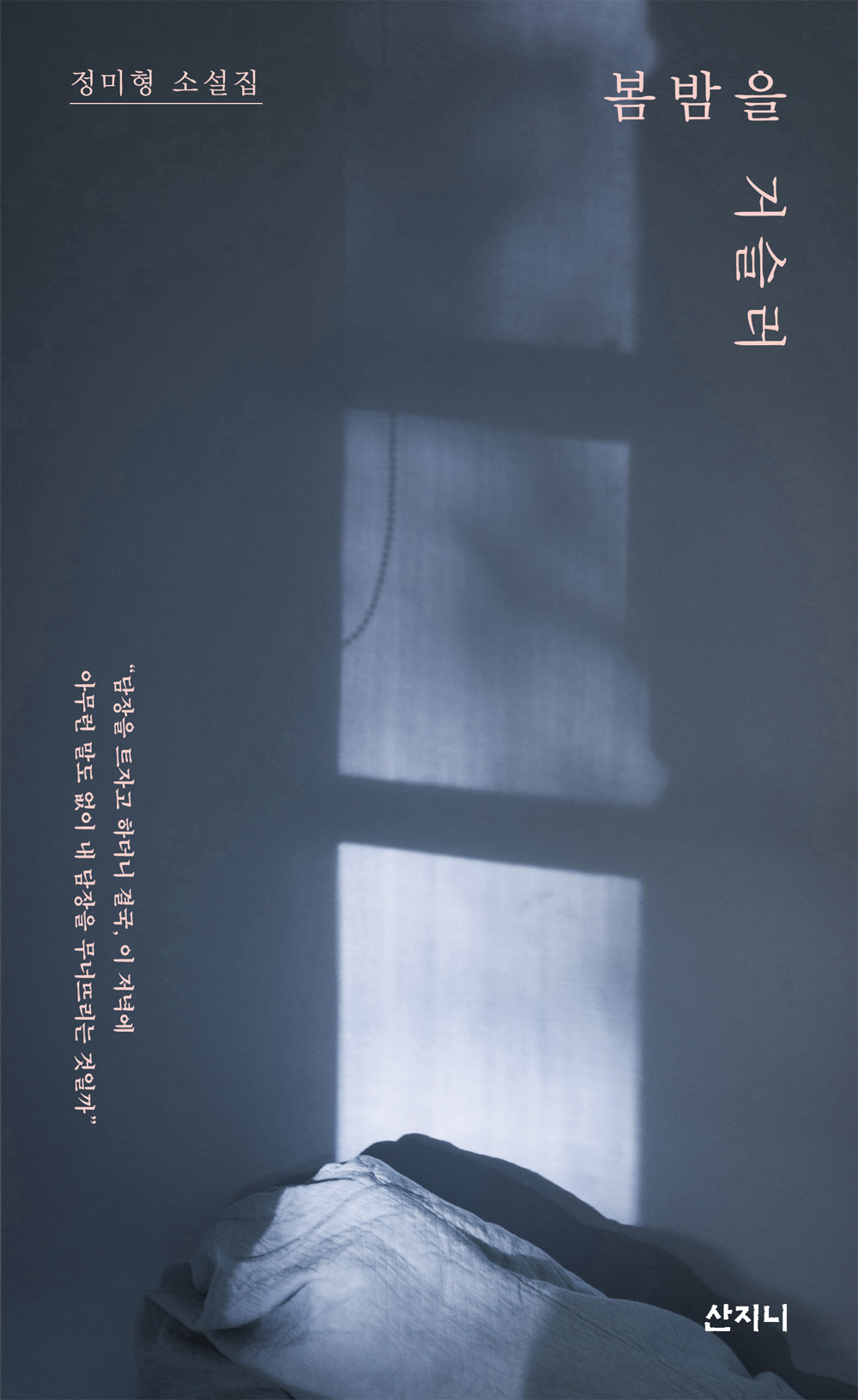
Through the Spring Night
Jung Mihyung
| Pages | 240 |
|---|---|
| Dimensions | 125 X 205 |
| ISBN | 978-89-6545-674-2 03810 |
| Price | 15,000KRW |
| Date | October 2020 |
| Contents | Short Stories |
In "The Man Who Disappeared into the Wall," the first-person protagonist reflects on her discomforting and suspicious marriage. She is convinced that her husband has disappeared into a wall. The husband is deeply connected with K, to the point that it feels as if he represents K. One day, the husband brings home cat-patterned wallpaper, a gift from K. Then the husband disappears into the wall with the wallpaper.
The lead work, "Through the Spring Night," portrays the spring day of an old poet. One day, the old poet's next-door neighbor begins working in her garden. The poet's uneventful days are filled with noise, and the poet examines his life and impending death.
"By Your Side, Forever" is a story about a man attempting to face the meaninglessness of existence and discover the purpose of life as he reads letters left by his wife who died in an accident. Despite a life besmeared with wounds, he begins to open up and communicate with another person who is like him.
"The Taste of Watermelon" depicts a married couple's trouble that begins one summer with a watermelon. A distant cousin and her spouse visit a newlywed with a watermelon, requesting them to cosign a loan. The husband, who was craving sweet, chilled watermelon, signs the loan document without hesitation after devouring the watermelon.
"A Yellow Light" is a story about the Port of Busan. The protagonist has fond memories of the sea and boats from when he used to hang out with his friends during his childhood. Years later, he visits his relative who has shut himself off from the world due to depression. Visiting the port, the protagonist watches the yellow light that supported his childhood.
In "Rubber Tree Story," the protagonist feels regretful watching her younger sibling who hasn't found his place in life. One day, the protagonist reflects on her childhood, looking at a rubber tree left behind in an abandoned building. The life, represented by a rubber tree, is noteworthy.
In "Nail Mark," the protagonist reflects on the tortuous life that his deceased mother lived as he wallpapers the apartment that she left behind. The man can't bring himself to sell his mother's house. As he pulls out the nails left by former tenants, he reflects on his own life.
